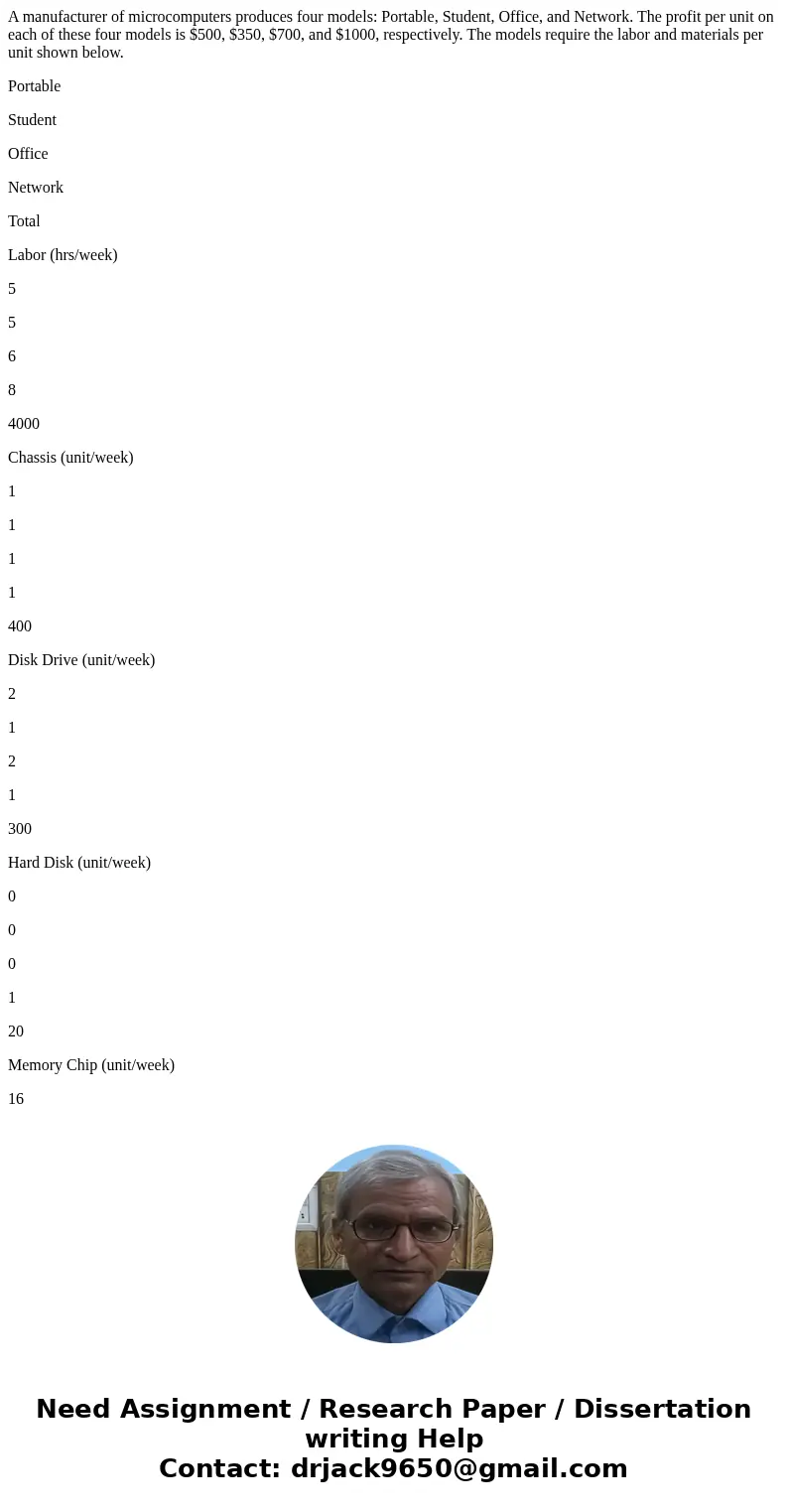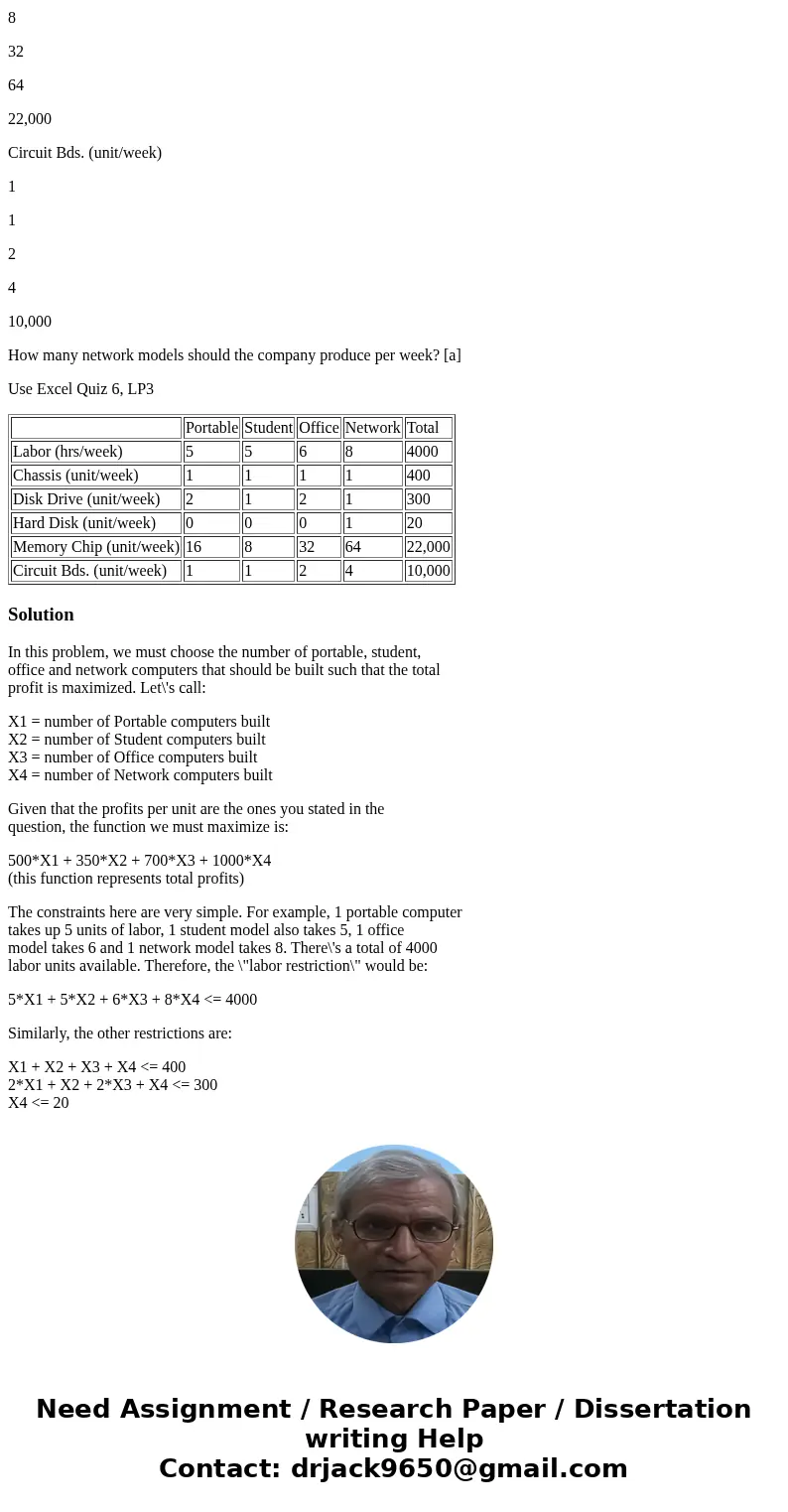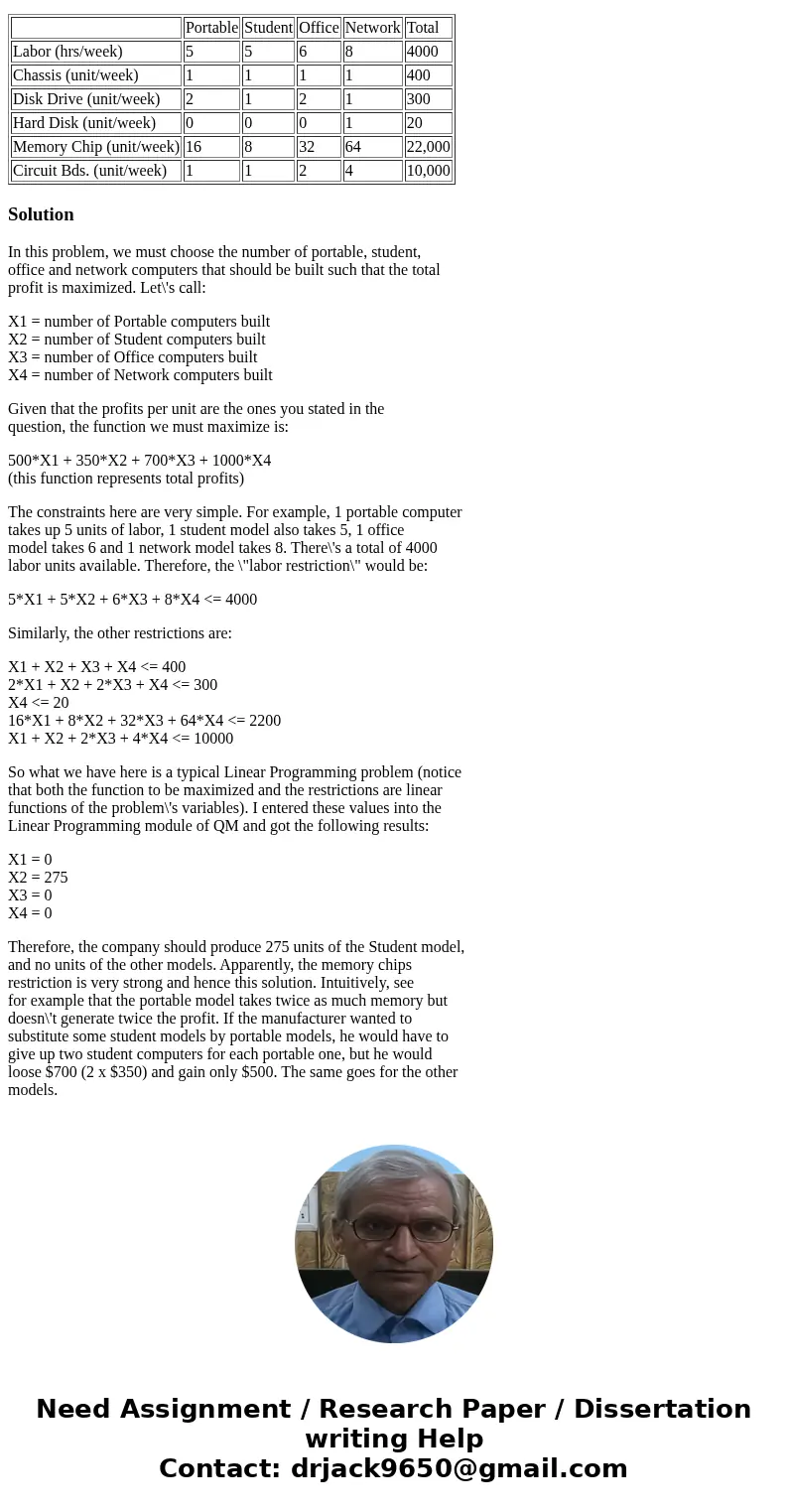A manufacturer of microcomputers produces four models Portab
A manufacturer of microcomputers produces four models: Portable, Student, Office, and Network. The profit per unit on each of these four models is $500, $350, $700, and $1000, respectively. The models require the labor and materials per unit shown below.
Portable
Student
Office
Network
Total
Labor (hrs/week)
5
5
6
8
4000
Chassis (unit/week)
1
1
1
1
400
Disk Drive (unit/week)
2
1
2
1
300
Hard Disk (unit/week)
0
0
0
1
20
Memory Chip (unit/week)
16
8
32
64
22,000
Circuit Bds. (unit/week)
1
1
2
4
10,000
How many network models should the company produce per week? [a]
Use Excel Quiz 6, LP3
| Portable | Student | Office | Network | Total | |
| Labor (hrs/week) | 5 | 5 | 6 | 8 | 4000 |
| Chassis (unit/week) | 1 | 1 | 1 | 1 | 400 |
| Disk Drive (unit/week) | 2 | 1 | 2 | 1 | 300 |
| Hard Disk (unit/week) | 0 | 0 | 0 | 1 | 20 |
| Memory Chip (unit/week) | 16 | 8 | 32 | 64 | 22,000 |
| Circuit Bds. (unit/week) | 1 | 1 | 2 | 4 | 10,000 |
Solution
In this problem, we must choose the number of portable, student,
office and network computers that should be built such that the total
profit is maximized. Let\'s call:
X1 = number of Portable computers built
X2 = number of Student computers built
X3 = number of Office computers built
X4 = number of Network computers built
Given that the profits per unit are the ones you stated in the
question, the function we must maximize is:
500*X1 + 350*X2 + 700*X3 + 1000*X4
(this function represents total profits)
The constraints here are very simple. For example, 1 portable computer
takes up 5 units of labor, 1 student model also takes 5, 1 office
model takes 6 and 1 network model takes 8. There\'s a total of 4000
labor units available. Therefore, the \"labor restriction\" would be:
5*X1 + 5*X2 + 6*X3 + 8*X4 <= 4000
Similarly, the other restrictions are:
X1 + X2 + X3 + X4 <= 400
2*X1 + X2 + 2*X3 + X4 <= 300
X4 <= 20
16*X1 + 8*X2 + 32*X3 + 64*X4 <= 2200
X1 + X2 + 2*X3 + 4*X4 <= 10000
So what we have here is a typical Linear Programming problem (notice
that both the function to be maximized and the restrictions are linear
functions of the problem\'s variables). I entered these values into the
Linear Programming module of QM and got the following results:
X1 = 0
X2 = 275
X3 = 0
X4 = 0
Therefore, the company should produce 275 units of the Student model,
and no units of the other models. Apparently, the memory chips
restriction is very strong and hence this solution. Intuitively, see
for example that the portable model takes twice as much memory but
doesn\'t generate twice the profit. If the manufacturer wanted to
substitute some student models by portable models, he would have to
give up two student computers for each portable one, but he would
loose $700 (2 x $350) and gain only $500. The same goes for the other
models.



 Homework Sourse
Homework Sourse